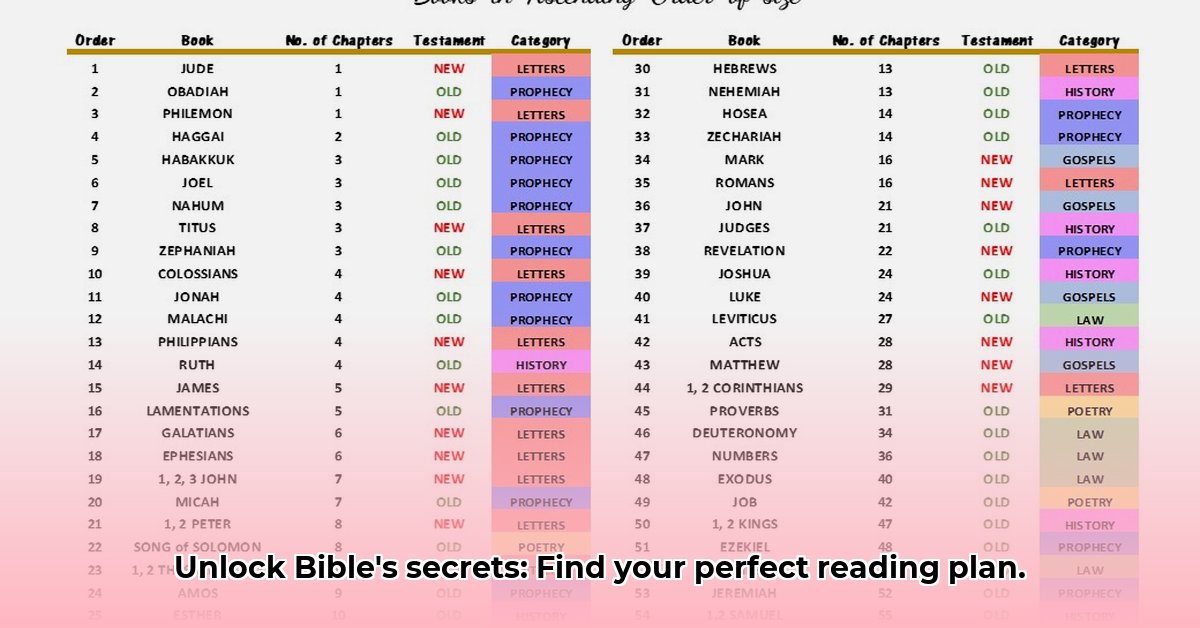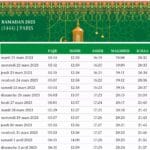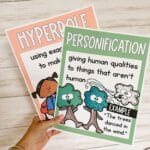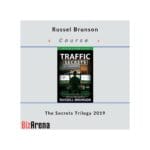Ever felt lost in the Bible, not knowing where to start? It’s a common question: What’s the best way to read it? This guide will help you find your perfect Bible reading plan, whether you’re a beginner or have been reading for years. We’ll explore different approaches – reading chronologically, by topic, by book type, or even by length – and help you choose the one that works best for you. We’ll provide detailed examples, actionable tips to maintain consistency, and insights on integrating your reading with prayer and reflection. For a structured approach, check out this helpful guide on [Bible reading order](https://www.lolaapp.com/how-to-read-the-bible-in-order/). Let’s unlock the amazing stories and wisdom within God’s Word together!
What Order to Read the Bible? Exploring Bible Study Methods
So, you’re ready to dive into the Bible, but you’re wondering, “Where do I even begin?” It’s a question asked by many, from new believers to seasoned theologians, and the good news is: there’s no single “right” answer! The best approach depends entirely on you, your current understanding, learning style, and what you hope to gain from the experience. Let’s explore some options and find the perfect path for your personal journey with the scriptures.
Diverse Approaches to Bible Study: Discover Your Ideal Style
Think of the Bible as a rich tapestry, woven with different kinds of texts – history, poetry, letters, law, prophecy, parables – all contributing to a grand, overarching narrative. There are numerous ways to engage with this amazing collection, each offering unique benefits and challenges. With approximately 2.38 billion Christians worldwide, understanding different Bible reading methods is crucial for personal growth and spiritual development.
1. The Chronological Adventure: Reading the Bible in Timeline Order: Envision reading a sweeping historical saga. This method involves reading the Bible in the order the events are believed to have occurred. It offers a compelling understanding of the historical context and progression of God’s relationship with humanity. However, it can require some navigation as timelines can be debated and certain narratives overlap. It’s like piecing together history – rewarding, but requiring attention to detail!
- Pros: Provides a comprehensive view of historical events. Illuminates connections between different periods and figures. Enhances understanding of cultural contexts.
- Cons: Requires external resources to establish the correct sequence. Can disrupt the natural flow of individual books. May lose thematic focus amidst historical details.
2. Encountering Jesus: The Gospel-Centered Approach: Many find beginning with the Gospels (Matthew, Mark, Luke, and John) to be a transformative starting point. These books narrate the life, teachings, death, and resurrection of Jesus Christ. It’s akin to grasping the central theme of a story, providing a solid foundation for further exploration. This is an excellent choice, especially for those new to biblical texts.
- Pros: Directly connects with the central figure of Christianity. Instills core Christian beliefs and values. Offers immediate spiritual encouragement and guidance.
- Cons: May lack initial understanding of the Old Testament context. Can present a limited view of the Bible’s overall scope.
3. In-Depth Exploration: The Thematic Study Method: Is there a concept that resonates with you – faith, hope, love, redemption, or perhaps justice? Thematic reading enables you to investigate these topics deeply throughout the scriptures. This method is ideal if you are seeking answers to specific questions or want to explore particular theological ideas in detail.
- Pros: Permits focused study of specific doctrines and concepts. Identifies recurring themes throughout the Bible. Encourages critical thinking and personal application.
- Cons: May overlook the broader narrative context. Can lead to a fragmented understanding if not balanced with other methods.
4. Appreciating Literary Styles: A Genre-Based Biblical Journey: The Bible consists of a range of literary forms, including poetry, historical accounts, legal texts, and prophetic writings. You could begin with the poetic books (Psalms, Proverbs), move to historical narratives (Kings, Chronicles), and then delve into the prophetic books. This approach fosters appreciation for the Bible’s artistic complexity.
- Pros: Develops an appreciation for the Bible’s literary features. Reveals the unique characteristics of each genre. Enhances interpretive skills by recognizing literary devices.
- Cons: Can disrupt the historical timeline. May not create a cohesive understanding of the Bible’s overarching story.
5. Building Momentum: The Gradual Approach (Starting Small): For readers who feel daunted by the Bible’s size, beginning with shorter books like Ruth, Jonah, or 1 John can be a great way to build confidence. It’s like starting with a manageable task – you gain momentum and enthusiasm as you progress. Gradually, you can then move on to lengthier and more complex texts.
- Pros: Fosters consistency and a sense of accomplishment. Provides a gentle introduction to biblical literature. Overcomes initial hesitation and builds reading habits.
- Cons: May delay engagement with major biblical themes and narratives. Can create a limited understanding of the Bible’s overall message early on.
Tailoring Your Approach: A Personalized Exploration
Determining the best method depends on your individual preferences and objectives. Ask yourself these essential questions:
- What do you aspire to learn or experience? Enhanced spiritual growth? A deeper understanding of history? A closer relationship with God?
- How much time can you realistically dedicate to reading each day or week? Consistency is key; start with a manageable commitment and gradually increase.
- What is your preferred learning style? Do you prefer narratives, detailed analyses, or a combination of both?
Beginners might find the Gospels or the gradual approach easiest to start with. Experienced readers might prefer a chronological or thematic approach depending on their particular interests.
Practical Reading Plans: Getting Started on Your Journey
Here are various reading plan frameworks to consider. Remember that these are merely suggestions – feel free to modify them to suit your own pace and preferences.
| Reading Plan | Description | Estimated Time Commitment | Best Suited For |
|---|---|---|---|
| Gospels Immersion | Immerse yourself in Matthew, Mark, Luke, and John to deeply know the life and teachings of Jesus. | 1-2 months | New believers, those seeking a deeper connection with Jesus |
| Wisdom Literature Focus | Explore the wisdom books: Job, Proverbs, Ecclesiastes, Song of Solomon, to gain practical insights for daily living. | 1-2 months | Readers seeking practical guidance and wisdom |
| Chronological Journey | Follows a chronological timeline using a reading schedule that interweaves Old and New Testament passages in the order events occurred. | 1 year | Those seeking a comprehensive historical overview |
| Topical Exploration | Focuses on passages related to a specific theme, such as forgiveness, grace, or prayer, studying all verses related to these selected topics. | Ongoing | Readers seeking a deeper understanding of specific concepts |
| Book-by-Book Study | Progresses systematically through each book of the Bible, starting with Genesis and ending with Revelation, reading each book in its entirety before moving on. | 2-3 years | Those desiring a thorough and systematic biblical education |
| Old Testament Focus | Focuses exclusively on the Old Testament, covering major events, figures, and themes, providing comprehensive coverage of the history of Israel and God’s covenants. | 1-2 years | Readers seeking to understand the foundations of faith |
Tips for Enriching Your Reading Experience
- Choose a translation: Select a translation that resonates with you (NIV, ESV, NLT, NASB, KJV, CSB, etc.). Consider readability and accuracy.
- Engage actively: Don’t just read passively; take notes, underline key verses, ask questions, and journal your thoughts and reflections.
- Utilize study tools: Study Bibles, commentaries, Bible dictionaries, and concordances can enrich your understanding.
- Connect with a community: Join a Bible study group or discuss your reading with friends. Sharing insights with others is an excellent way to deepen your understanding and stay motivated.
- Pray Reflectively: Before, during, and after your reading, take time to talk to God about what you are reading, asking for understanding, guidance, and application.
- Practice patience and self-compassion: Reading the Bible is a lifelong journey, not a sprint. Don’t be discouraged if you miss a day or feel overwhelmed. The key is consistency, not perfection.
Ultimately, the most effective way to read the Bible is the method that resonates with you. Embrace the process, savor the experience, and allow the Word to transform your perspective and enrich your life. Your personal understanding will grow exponentially over time.
Conquering Reading Fatigue: Discovering the Best Bible Reading Plan for Sustained Engagement
Key Insights:
- A variety of Bible reading plans exist, each designed to cater to different learning styles and spiritual objectives.
- The ideal selection hinges on your experience level, personal goals, and learning preferences.
- Supplementary resources, such as commentaries and study guides, enhance comprehension and engagement.
- Consistency is paramount, even if it necessitates adjusting your plan to fit your lifestyle.
Identifying Your Reading Style: A Foundation for Success
So, you desire to delve into the
- Unlock Umami’s Savory Secret: The Science of Deliciousness - July 30, 2025
- Discover How the Columbian Exchange Reshaped Global Cuisine - July 30, 2025
- Unlocking the Placebo Effect: How Your Brain Can Heal Your Body: New Insights - July 30, 2025
















